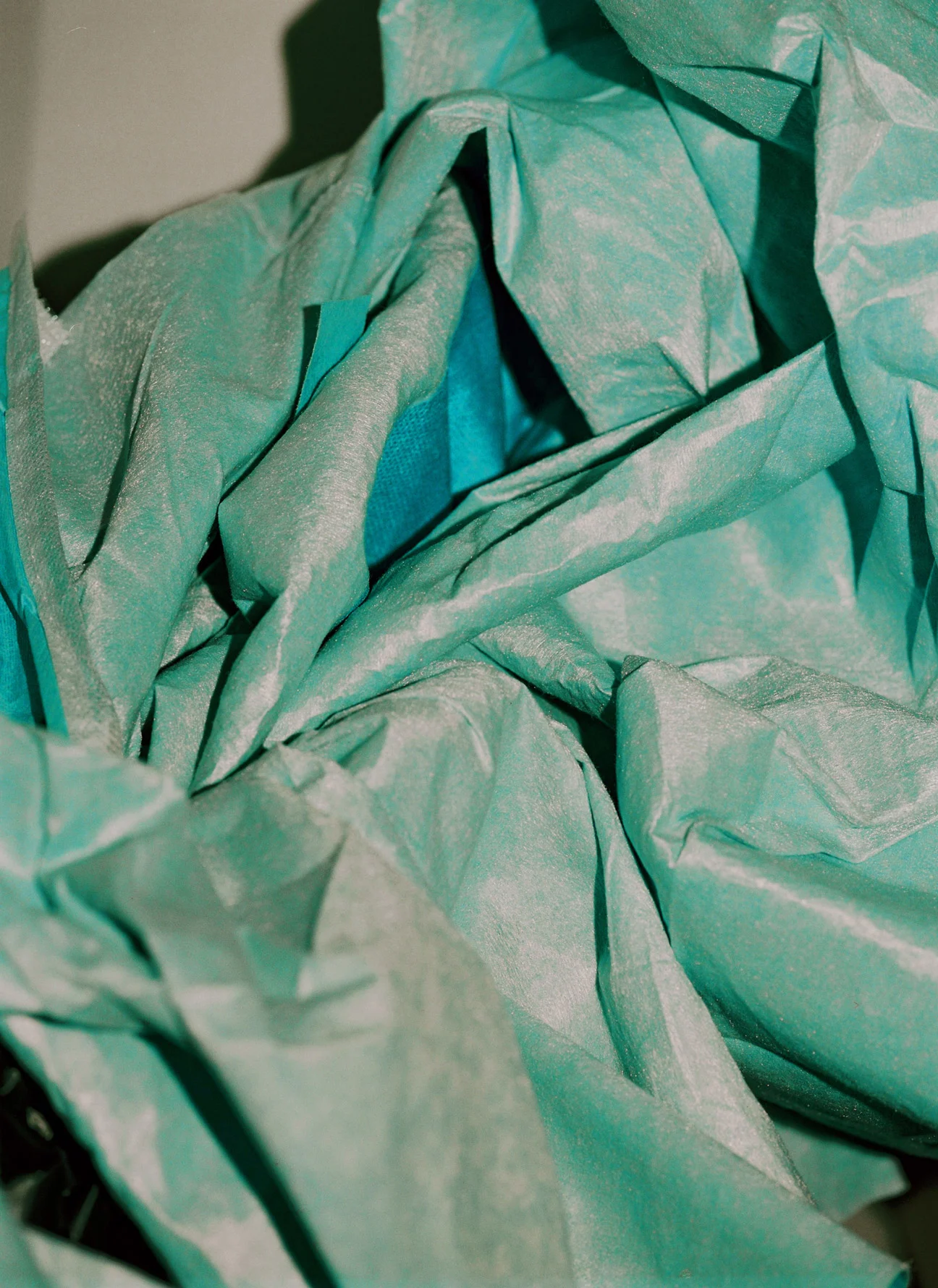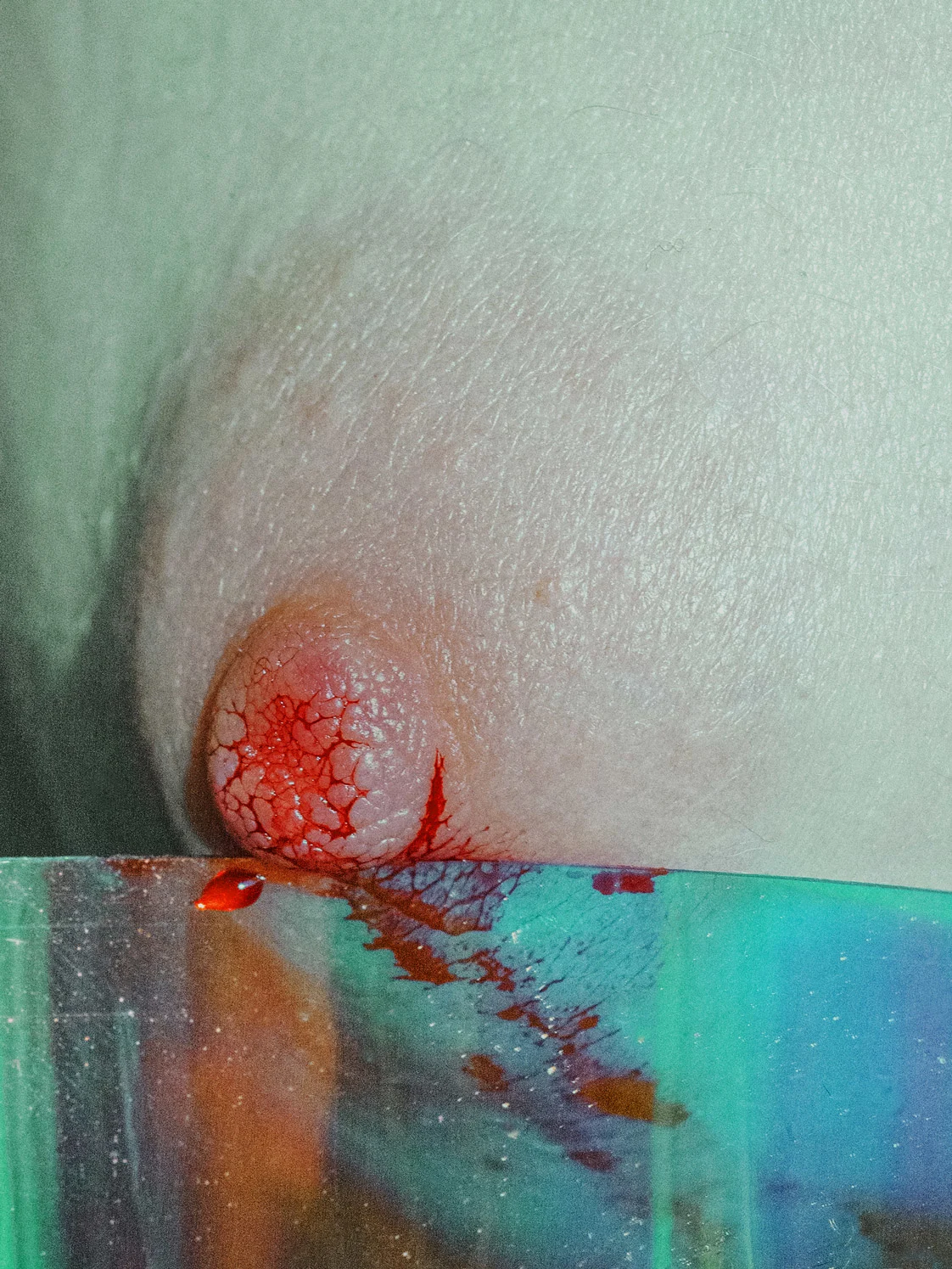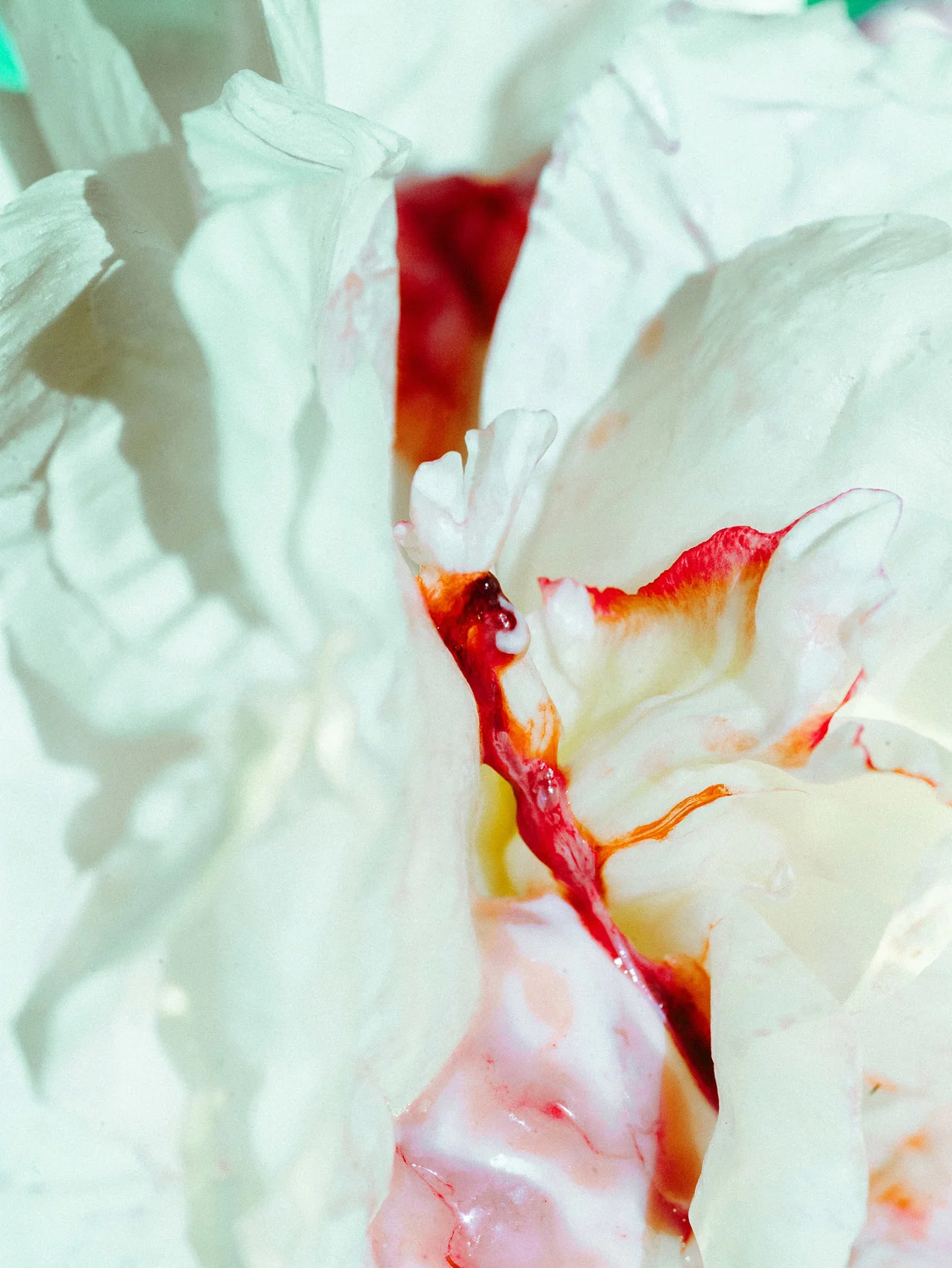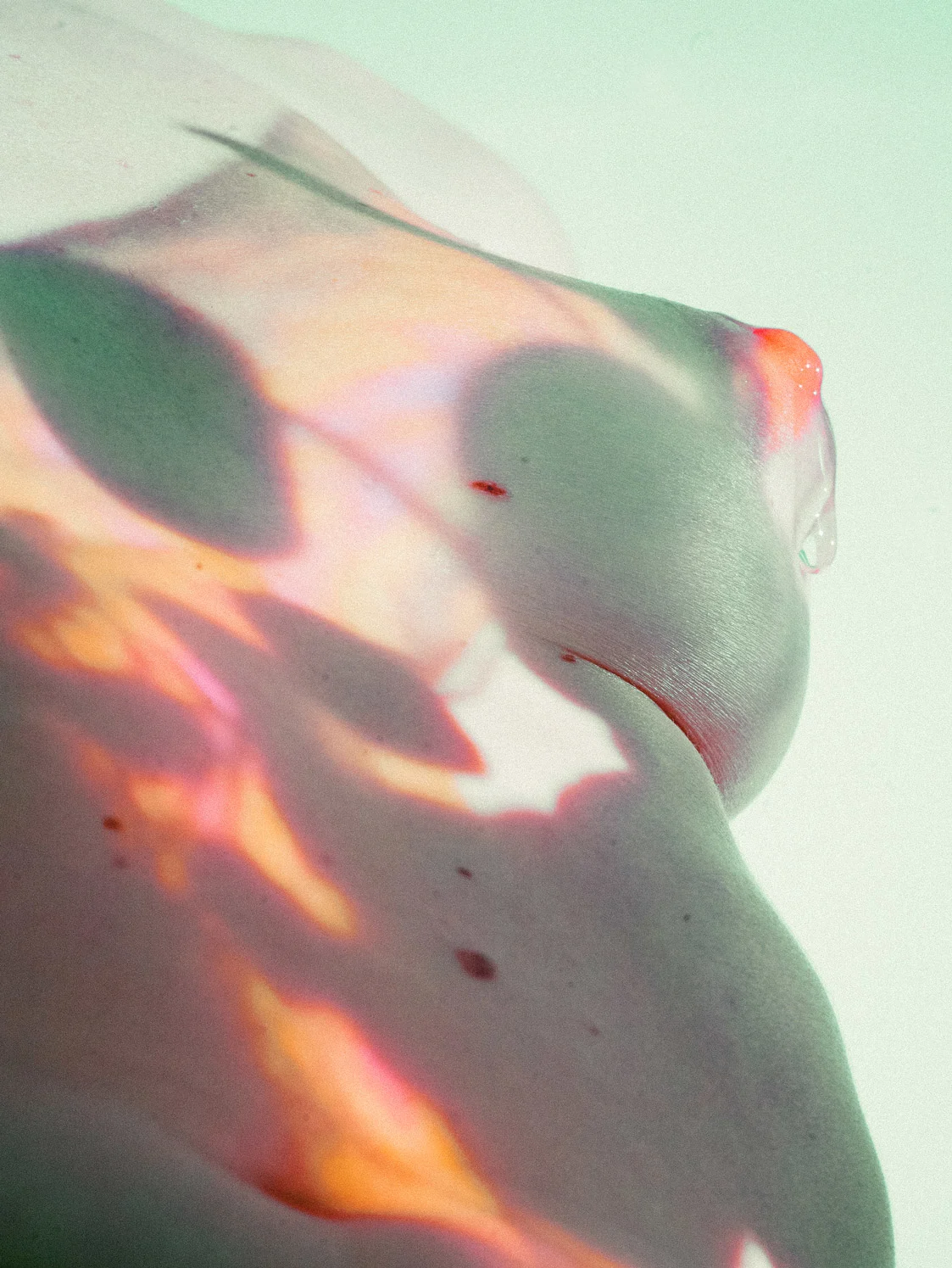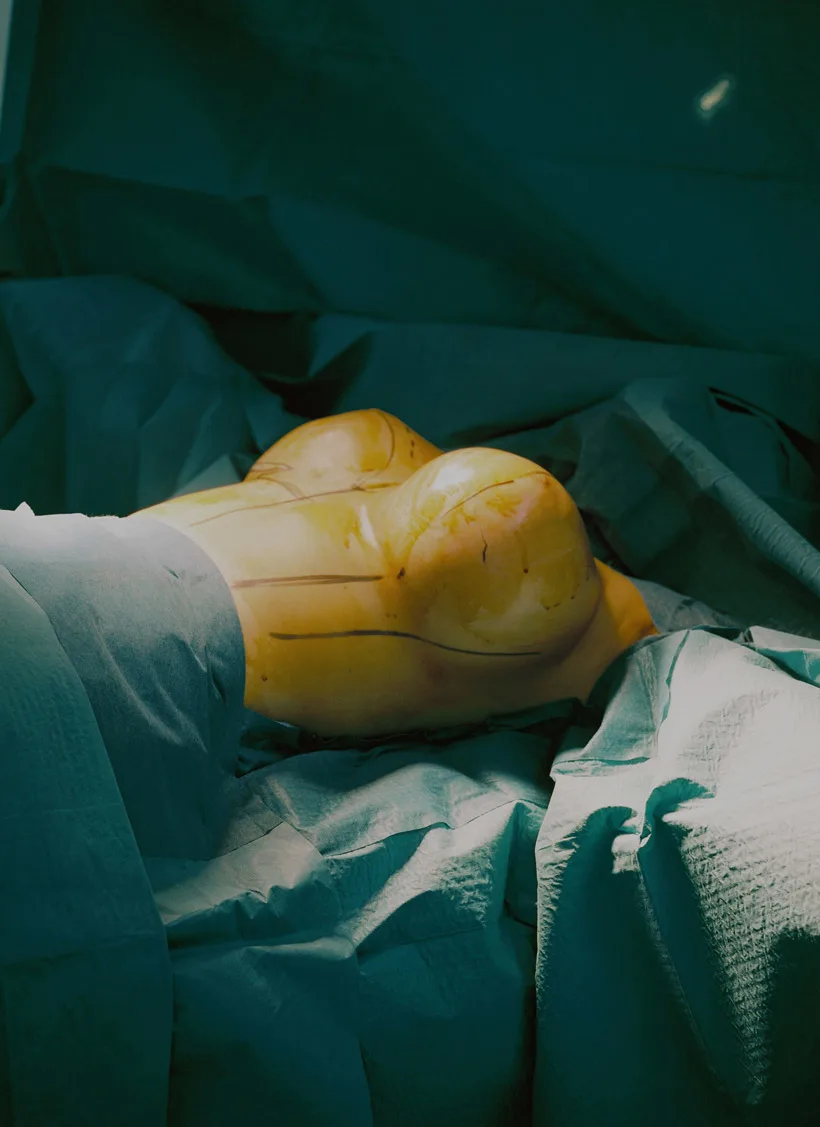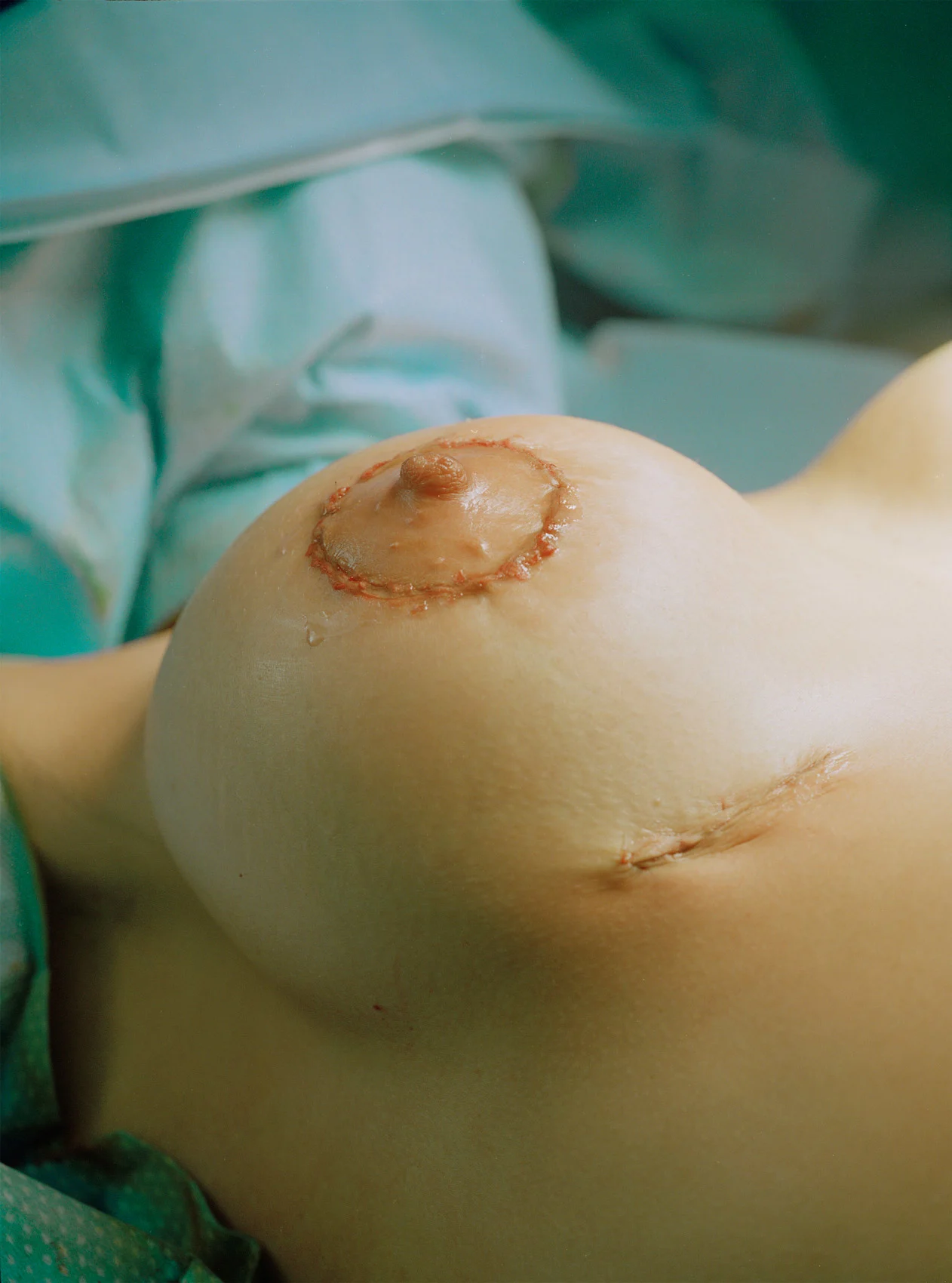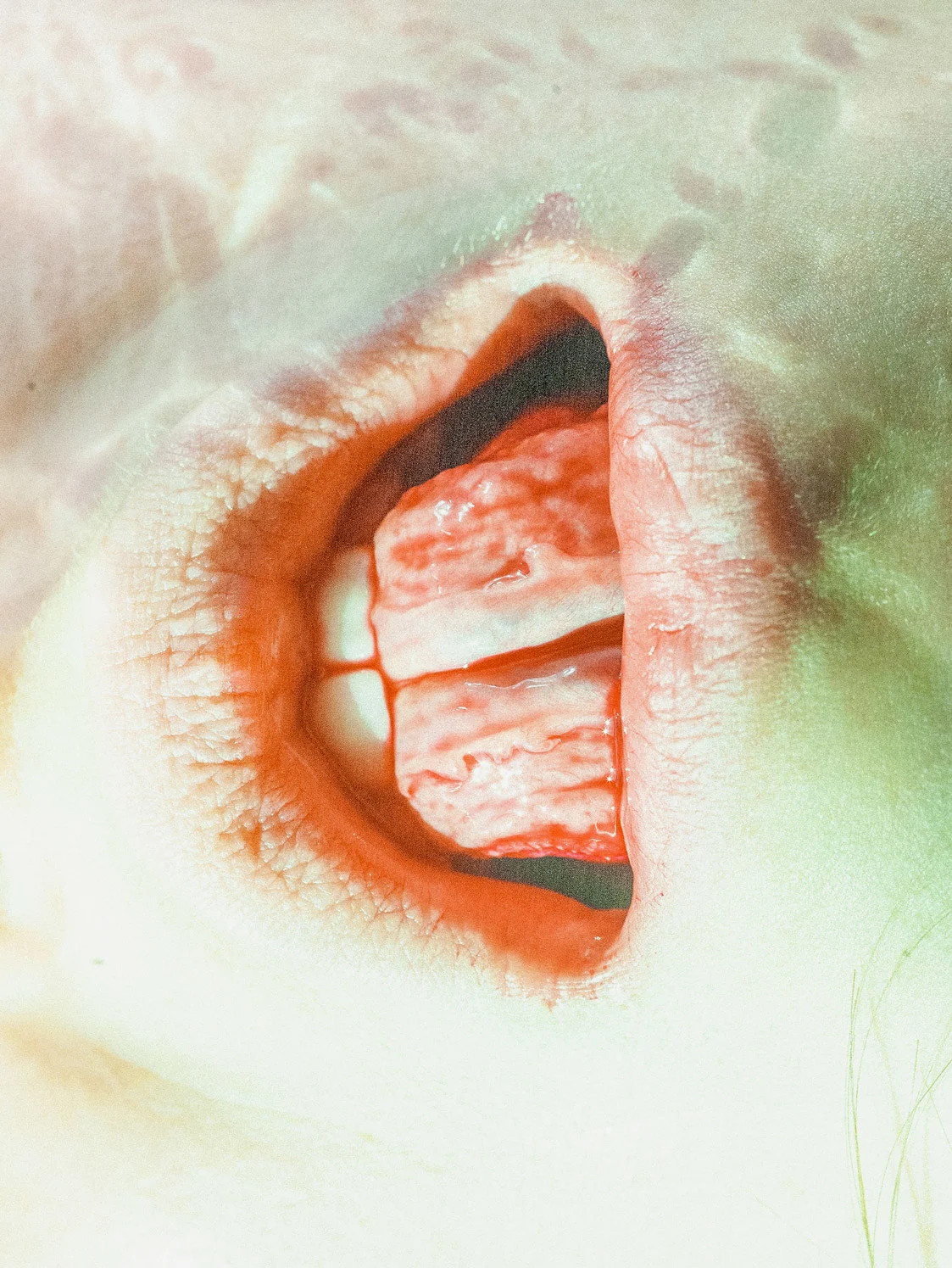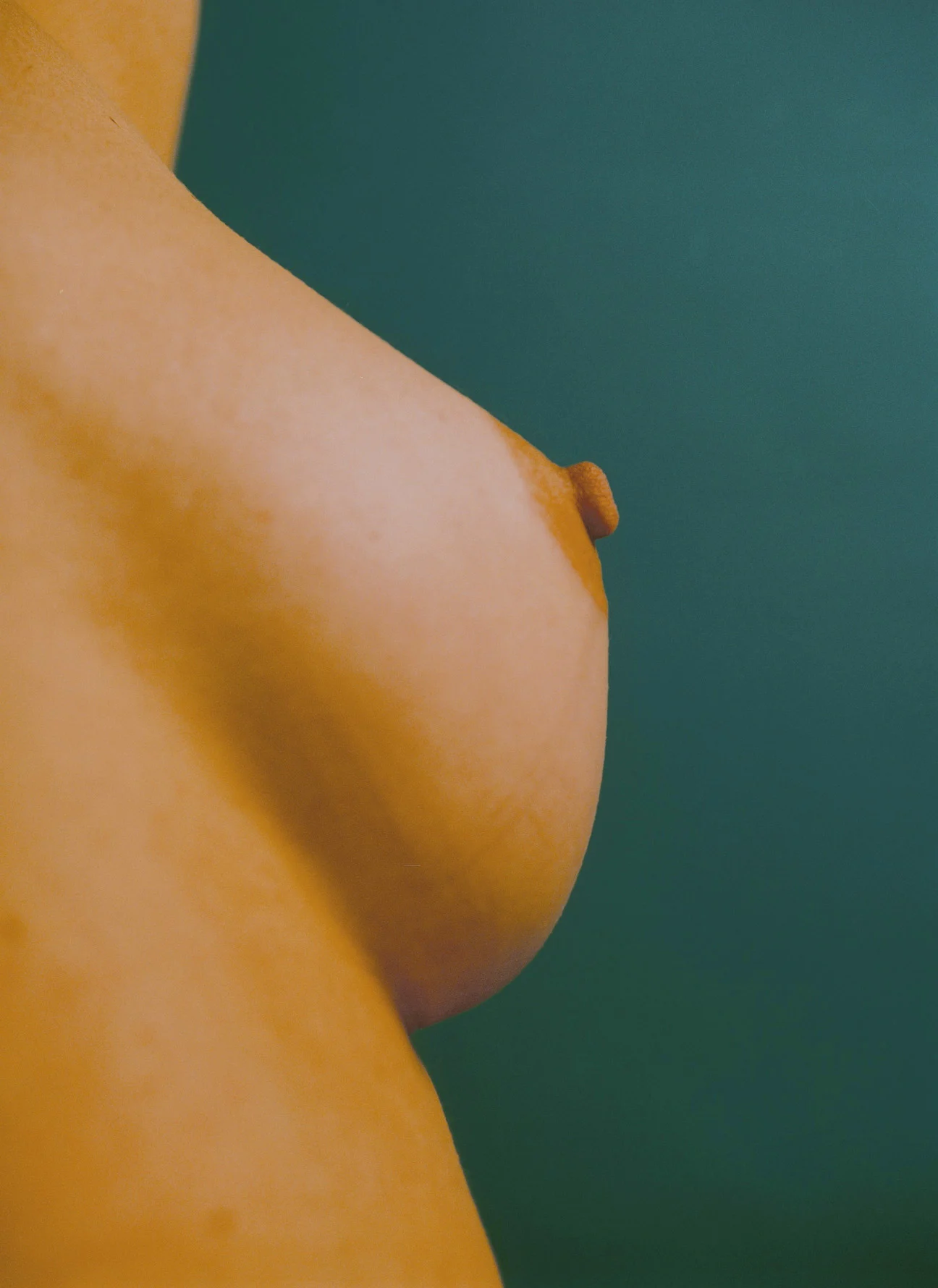
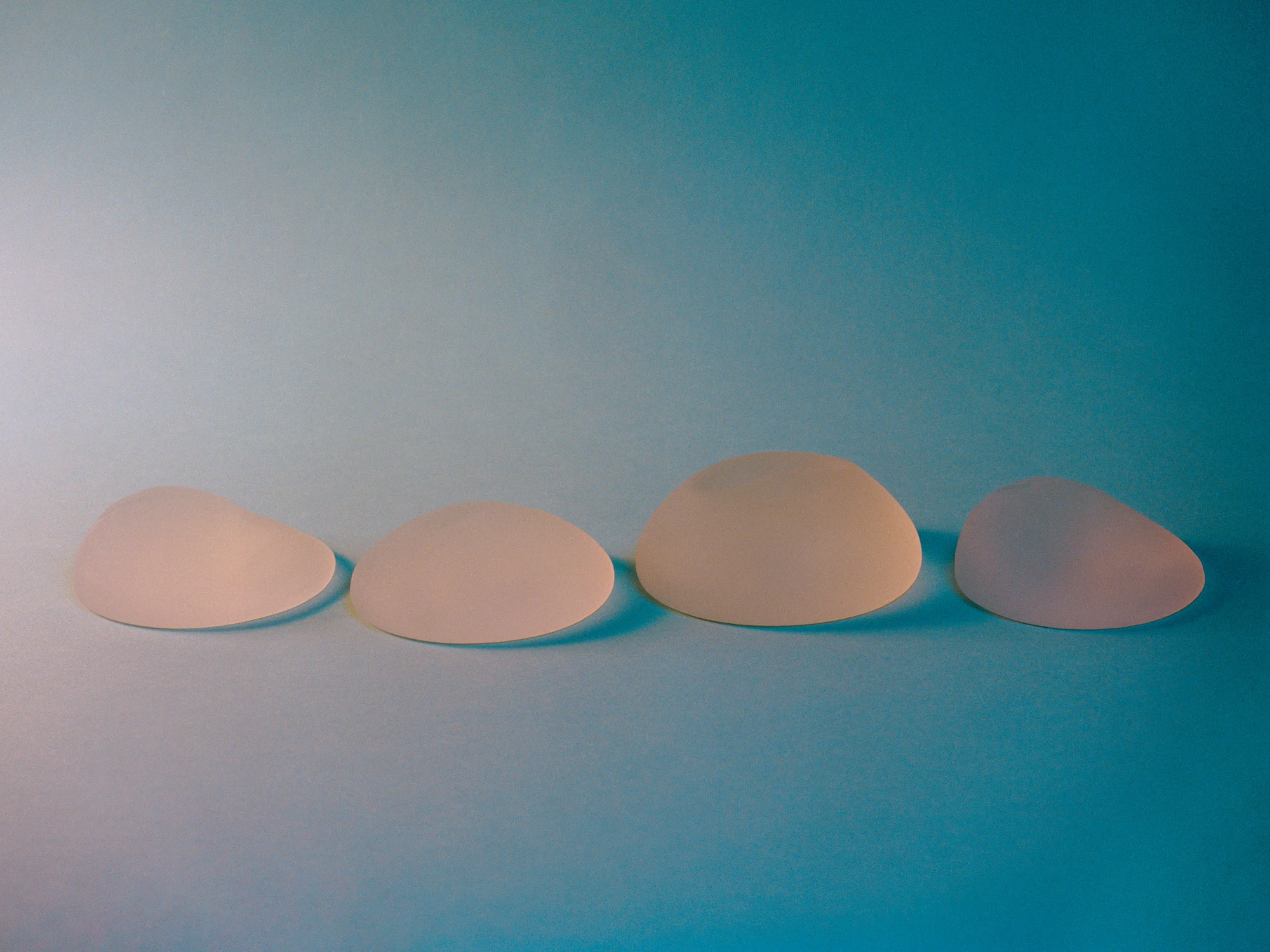
The photos in Lucile Boiron’s series Mise en pièce, taken between a cosmetic surgery theatre and her own home, are graphic. The project sees Lucile place shots of body parts on operating tables alongside images of plants or animal products. The operating tables might remind people of death, the limbs prepared for surgery might remind people of the degeneration of our bodies over time, but Lucile hopes the series will have the opposite effect.
Whether we’re looking at the plants, the animal products or the body parts, we’re just seeing all the things we’re made up of: veins, nerves, cells, and bones. Seeing these close-ups, arranged and overlapping, we’re not necessarily supposed to see them for what they are, but as a simple representation of “life.” Here, Lucile talks us through what the project means to her.
“Mise en pièce blends together two works that were made a year apart. The first series was made over the course of six months while I documented plastic surgery operations. After taking the photos, I decided not to show the images immediately. I was afraid that they were too voyeuristic and I had some difficulty defining the meaning of the project.
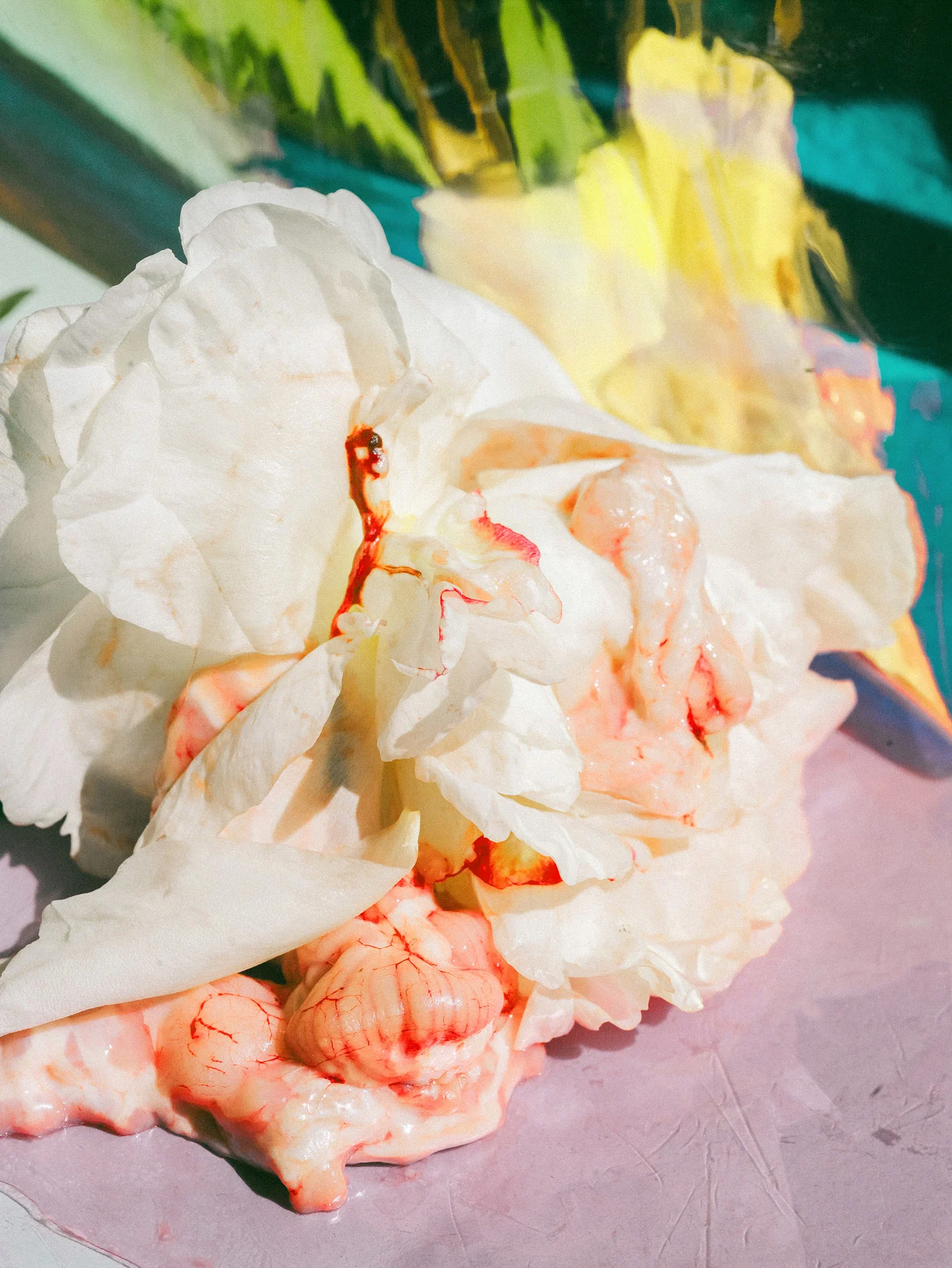

The second series took shape during the first lockdown at a time when, isolated, I was forced to become my own model. I photographed myself slice by slice accompanied by organic compositions I made from plant and animal materials.
A few months later, I realized that I had unconsciously replayed what I had seen in the operating theatre using my own body. It had become a field of exploration, where I could dissect every little piece of the anatomy. Whether it was my own body or that of the patients I photographed, the notion of individuality was completely erased. Seen so closely and without any context, the bodies suddenly become abstract, shapeless. Organic, sensitive bodies obeying a logic of their own. There is no longer any gender, only fragments that come together to form one body.


Seen so closely and without any context, the bodies suddenly become abstract, shapeless.
Together, the two projects make a collection of images that could be described as rhizomatic. There is no hierarchy, no beginning or end, but a tangle of diverse images that respond to one another. These photos show the degradation and obsolescence of living bodies. A lot of people find that uncomfortable, but I hope that by photographing that gradual change, it can be seen simply as metamorphosis rather than deterioration. Photography allows us to recreate a form of utopia by making reality more beautiful.
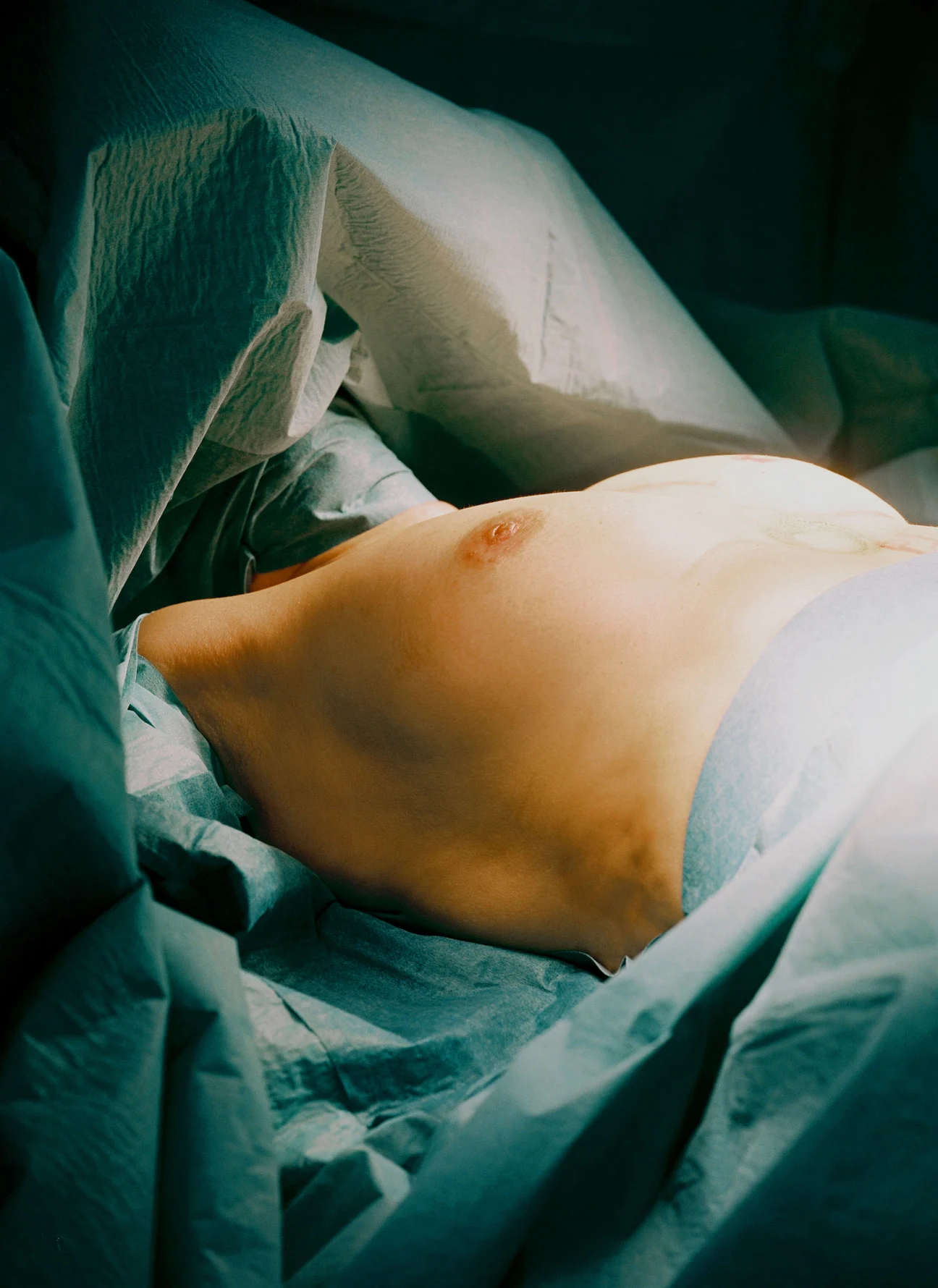
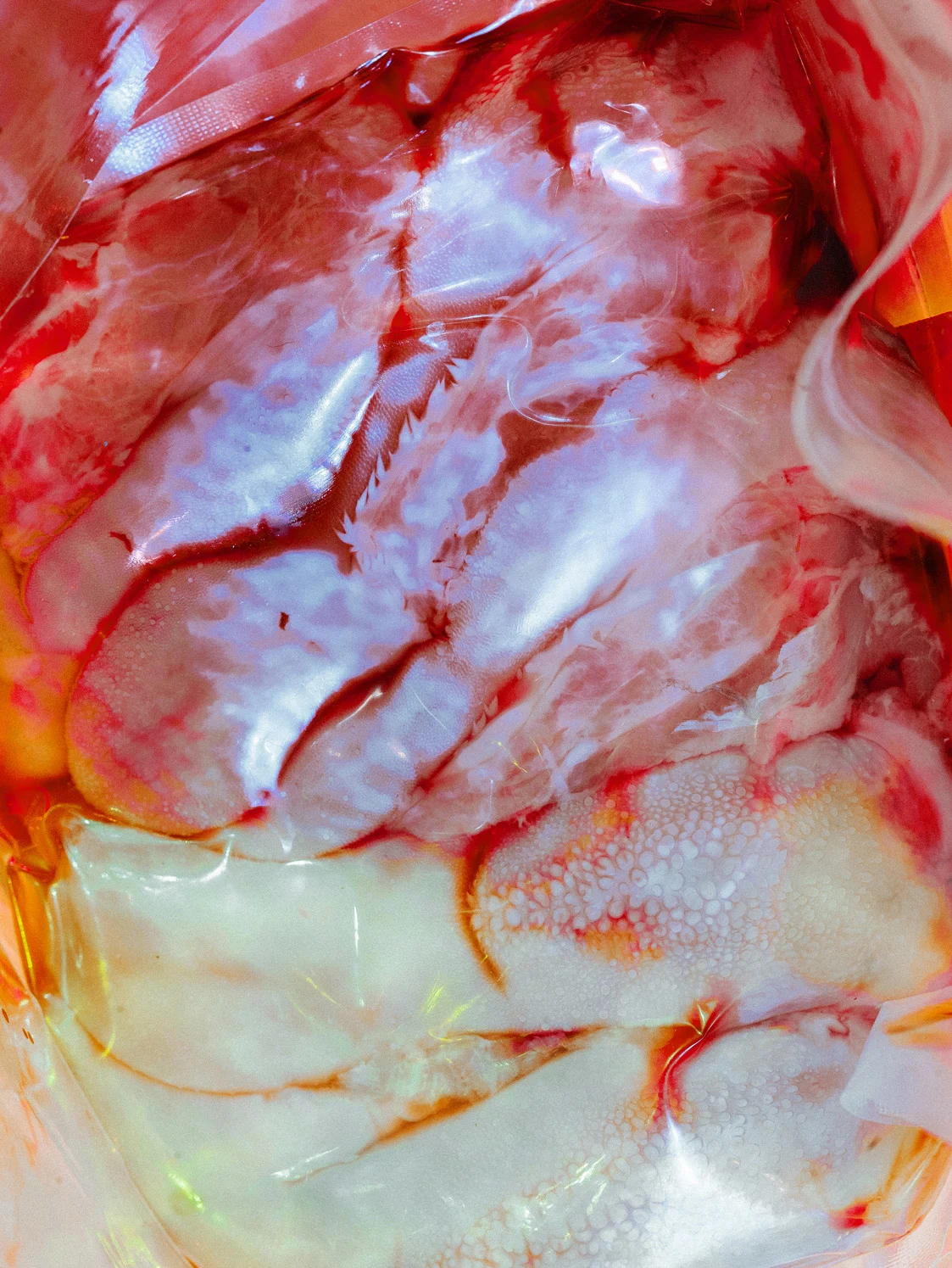
Life is defined by the way the body is damaged, flayed and transformed.
There is probably a cathartic dimension to my photography. I have a neurotic relationship with my own image. Everything I do, including photography, is an attempt to overcome this. By taking these photographs, it's a bit like replaying what makes me suffer: capturing the programmed decrepitude of bodies. But above all, it is an exploration of the living. To accept this is to be on the side of life. Life is defined by the way the body is damaged, flayed and transformed.”




